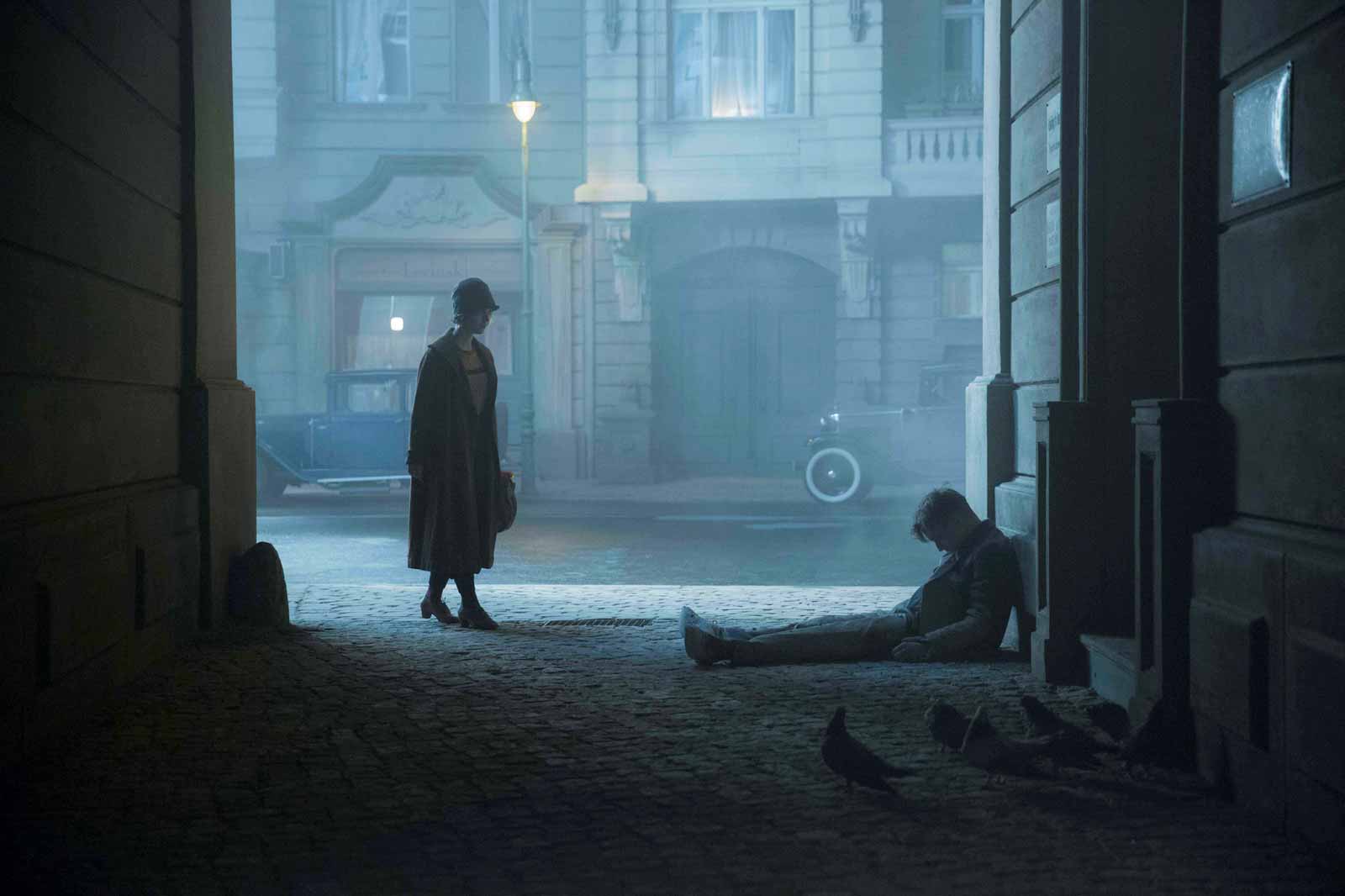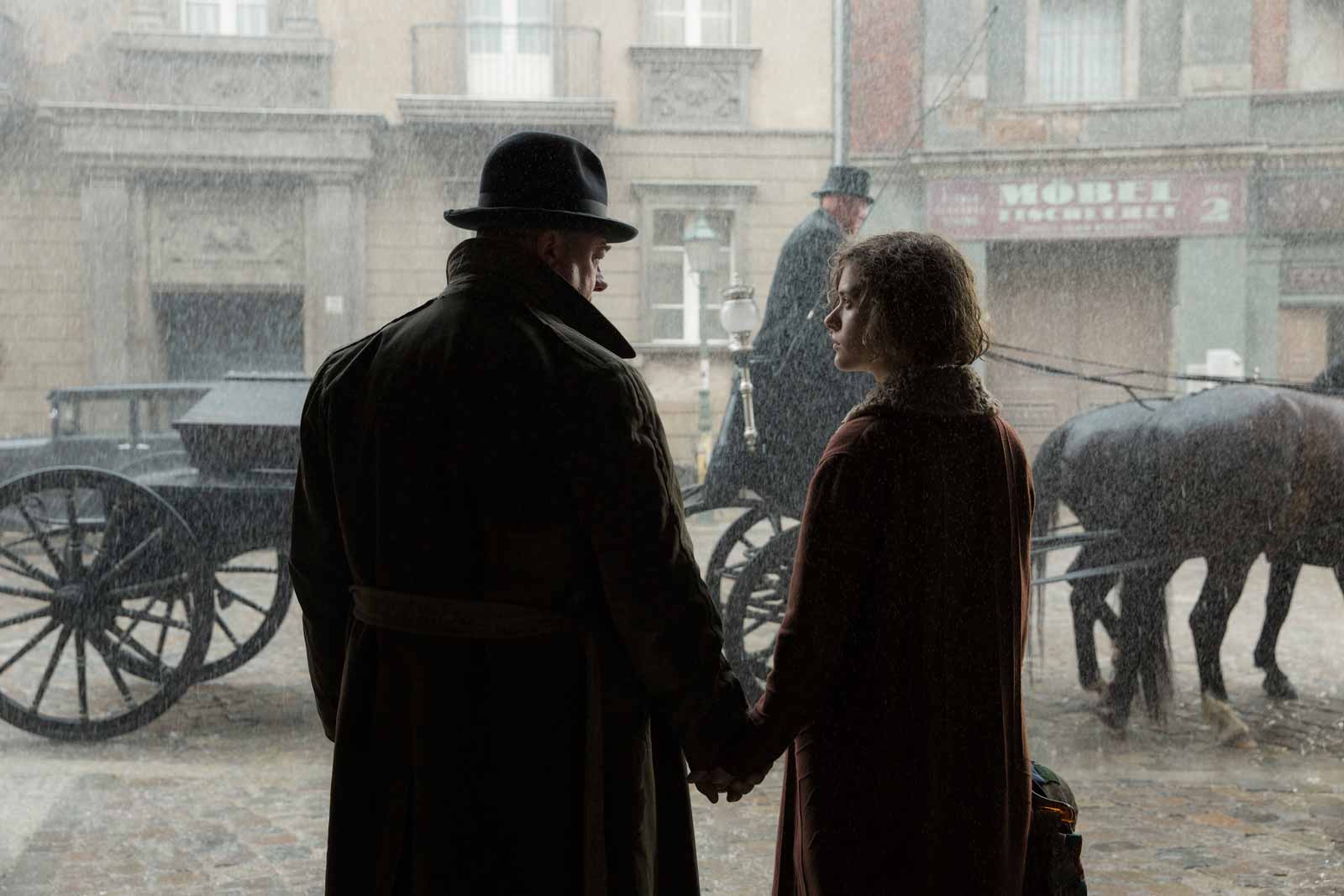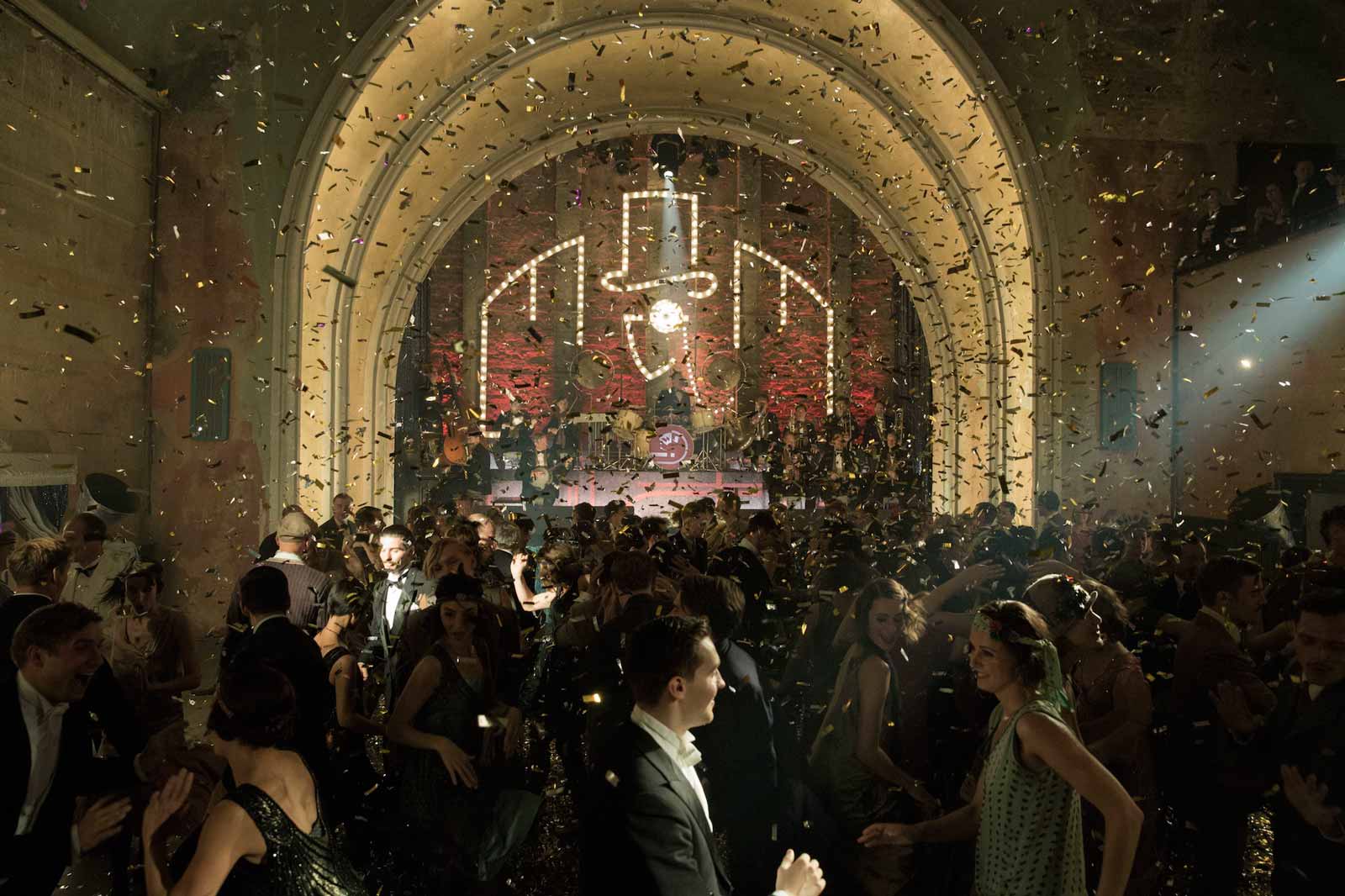“In the streets of Berlin, one is often struck by the momentary insight that someday all this will suddenly burst apart,” observed the critic and journalist Siegfried Kracauer in a 1926 essay on the city’s picture palaces. Because of its fragility, the irreconcilable forces that threatened it, and the apocalyptic air that came to enshroud its short-lived existence, the Weimar Republic has often been perceived as “a dance on the edge of a volcano,” as the great Yale historian Peter Gay famously called it, or a “voluptuous panic,” as Mel Gordon titled his erotic history of the period.
Small wonder that artists, writers, and filmmakers have been drawn, again and again, over generations, to depict that time and place. But not since Rainer Werner Fassbinder adapted Alfred Döblin’s acclaimed 1929 novel Berlin Alexanderplatz into a fourteen-episode production that aired on West German television in 1980 has there been as much talk about a German television series set in the Weimar era as there has been this year about Babylon Berlin. Its first two seasons, now available on Netflix, encompass sixteen episodes chronicling the turbulent spring of 1929. Its budget—close to $50 million—makes it by far the most expensive production in German TV history, as well as the priciest non-English-language TV drama series ever. The brainchild of Tom Tykwer—whose inventive Berlin drama Lola rennt (Run Lola Run) first captured international attention in 1998—and a pair of writer-director partners, Achim von Borries and Henk Handloegten, the series required a painstaking 180-day shoot with three separate crews, filming on location and on a back-lot set called “Neue Berliner Straße,” at the Babelsberg Studio, just outside the city limits.
The result is a show with lavish production values, a talented cast and crew, and a meticulously reconstructed setting. At its center is Gereon Rath (Volker Bruch), a handsome young shell-shocked war veteran with a heroin habit, who moves from Cologne to join the Berlin vice squad in its effort to crack a pornography ring. His partner, the hardboiled Chief Inspector Bruno Wolter (Peter Kurth), has an imposing build, a diabolical laugh, and an intimate acquaintance with the city’s criminal world. But the show’s most street-savvy, and engaging, character is Charlotte Ritter (Liv Lisa Fries), a determined young woman in a brilliant emerald-green hat who manages to go “everywhere,” as she announces the first time she appears onscreen, climbing up the ranks from temporary typist to detective, despite her lower-class origins.
Babylon Berlin is based on Volker Kutscher’s enormously successful Gereon Rath mystery series, which was a bestseller first in Germany and now around the world (a graphic novel rendition, by Arne Jysch, appeared in English last month). The show’s first two seasons are drawn largely from Book One, Der nasse Fisch—literally “the wet fish,” a term used by German detectives to refer to an unsolved crime. Kutscher opens with an aptly chosen epigraph from Walter Rathenau, Weimar Germany’s foreign minister, who was brutally assassinated by a proto-Nazi underground terrorist group in 1922: “Athens on the Spree is dead, Chicago on the Spree is rising.” The mix of internationalism, mob violence, and corruption in the world that Kutscher depicts, and the universal language in which it communicates, couldn’t be clearer. “We don’t have it so bad,” insists Bruno Wolter early on in the novel. “We get to gad about the night spots of the most exciting city of the world, which is also the most disreputable.” It’s precisely that combination of the exciting and the disreputable that makes both the novel and the television series so irresistible.
Neither includes more than a passing reference to Hitler (“a strange bird with a Charlie Chaplin moustache,” as the book has it), and the one flare-up of anti-Semitism in the television series is mainly directed at August Benda (Matthias Brandt), a top police official and a Social Democrat; we barely catch a glimpse of Jewish life, other than a stray Hasid who traipses into the frame near the Alexanderplatz. This is the spring of 1929, after all, and the Nazis’ path to victory is anything but clear. Street battles between the Communists and the police occur with increasing frequency, notably in bloody May Day demonstrations that spark bitter recriminations on both sides, and there is plenty of blame, especially from the military elites, for the loss of World War I. Near the start of the TV series, Wolter attributes that defeat to the lack of effective weapons, and the repressed desire for rearmament he represents, strictly verboten by the dictates of the Versailles Treaty, will bubble up to the surface before long.
Advertisement
For viewers like me, who have spent years exploring the world of Weimar Germany, there is an uncanny pleasure in watching Babylon Berlin and recognizing the many cinematic allusions it folds in—for instance, a scene of UFA studio executives watching Marlene Dietrich’s spirited screen test for The Blue Angel (1930). Kutscher claims to have taken partial inspiration for his books from M (1931), Fritz Lang’s proto-noir film about Berlin’s underworld. Likewise, the casting of the plump Peter Kurth as the pugnacious Chief Inspector Wolter is perhaps a conscious nod to Inspector “Fatty” Lohmann (Otto Wernicke) in M; there’s even a Russian orchestra’s delirious reinterpretation of Edvard Grieg’s In the Hall of the Mountain King, the same haunting tune that Peter Lorre whistles in Lang’s film. At different points in the first two seasons, we see moviegoers watching the late-period silent masterpiece Menschen am Sonntag (People on Sunday, 1930), an aching love letter to Weimar Berlin made by, among others, a young Billy Wilder. An entire episode centers on a lakeside outing at the Wannsee, repurposing one of Menschen’s plotlines (though I can’t help noting that the film’s première actually took place months after the year depicted in the series).
One of the most poignant scenes in Babylon Berlin encapsulates the beguiling spirit of the times. It takes place inside the sleek, shadow-filled Moka Efti nightclub, a favored destination among Weimar Berliners seeking nocturnal distraction. Its multiple levels include an art-deco restaurant with a set of menacing fish tanks and a sumptuous pleasure palace, where all manner of fetishistic fantasy is indulged, on the floor below. The Russian Countess Svetlana Sorokina (Severija Janušauskaitė) appears on stage in drag as Le Grand Nikoros—moustache, leather trench coat, top hat—and sings a hypnotic chanson, “Zu Asche, zu Staub” (“To Ashes, to Dust”), before a crowd of dancers, including Charlotte, who, along with the group, mimics the countess’s gestures as the song rises and falls. Roughly midway through the number, a stream of chorus girls, dressed in pasties and a striking variation on Josephine Baker’s banana skirt, join Sorokina onstage. Finally, the entire audience dances in wild, syncopated unison, saluting and applauding Sorokina before she disappears in a flash of fire and smoke.
From the first moment of the series, when Rath is instructed by a disfigured war psychiatrist to breathe in and out, guiding him to uncover his tortured memories, we are put in a kind of hypnotic trance. The ubiquity of mind-altering substances, both in Babylon Berlin and in the actual historical epoch, exacerbates the general haze. During the Weimar Republic, cocaine use was so widespread—the novel picks up on this a bit more than the television series—that the popular press at the time spoke of “Kokainismus,” as if a new epidemic, one tailor-made for the city’s unrelenting tempo, had swept the capital. “The eyes shine—pupils enlarge, cheeks glow, lips quiver, hands tremble and churn, light and free as if in roses and curls,” remarked one contemporary observer; “breath comes like a blessed floating, and the pulse glides fast and unrestrained through the veins.”
Part of what makes Babylon Berlin so engrossing is that it captures the era with such flair, efficiency, and seeming authenticity—from the scenes of nightlife to those of pitched political battle. Some of the colorful characters that populate the series, such as the crooked military officials and the members of the Schwarze Reichswehr, intent on overthrowing the republic, may be familiar to us from the 1920s canvases of Otto Dix or the political satires of Kurt Tucholsky. The queasy allure of the Weimar period, with its decadence, underlying threat of violence, and palpable sense of gathering doom, has never fallen out of fashion. But Babylon Berlin brings a fresh perspective to images and material that might otherwise seem shopworn, and its frenetic rhythms are particularly apt for a moment when we appear to be dancing our own convulsive tango on the edge of a fiery volcano.
Babylon Berlin is available on Netflix.





